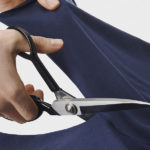Clothing was one of only two UK online retail categories to record year-on-year sales growth in July.
UK online retail sales growth dipped 2.3% year-on-year in July thanks to a boost from clothing retailers, according to the latest IMRG Capgemini Online Retail Index, which tracks online sales for 200 retailers. This represents the joint lowest decline the Index has seen this year – and a considerable improvement on the three- (-3.6%), six- (-13.5%) and 12-month (-18.1%) averages.
While the decline is a continuation of the negative growth that has been consistent across 2022, it was building on a relatively mild decline of 5.4% in July 2021, which makes it seem a slightly better performance than it has been in previous months.
The two major events in July, Britain’s hottest day on record and the women’s Euro tournament, appear to have been factors influencing the improved year-on-year result – as is evidenced when looking at the weekly breakdown. While three of the four weeks in July saw negative growth, week commencing 10 July – the week leading up to the hottest day – was up 5.8% year-on-year, only the second time any week has been positive this year.
The categories driving that result were electricals (as people purchased fans, reflected in a marked drop in average spend for that category), clothing (where people may have looked for loose-fitting items) and garden. For the month as a whole, however, only clothing (+11.9%) and garden (+3.3%) recorded positive growth.
The heatwave made it more difficult to trace any uplifts directly attributable to the success of the Euros tournament, as electricals, beers, wines and spirits and clothing would be the main categories that could see a spike. For clothing, where sports items would be classed, the conversion rate across July was in line with that of the same weeks in 2021, whereas it had been down slightly for the rest of the year. This suggests there may have been some early influence, which may become clearer in August’s figures.
“It seems remarkable that it took the hottest day in British history and England actually winning a football tournament to produce only slightly negative growth – it does make you wonder what would need to happen for it to be positive. Black Friday/peak season trading looks like it might be very difficult this year, given the Bank of England has increased interest rates and inflation is expected to reach 13% by then. In April, the energy cap went up and people saw the NIC rise in their pay packets, consequently, sales in the first week of May fell through the floor. It seems likely the next energy cap rise in October will do something similar to the start of peak trading,” Andy Mulcahy, strategy and insight director, IMRG.
Simon Binge, commerce senior manager, customer transformation at Capgemini, adds: “As the pressure on their spend continues to mount, consumers are having to make tough choices with regards to their purchasing behaviour, and the July data suggests that seeking value for money is more important than ever. The growth in order volumes (+26.1%) of premium footwear retailers combined with lower basket values implies consumers are seeking value through quality, albeit in more affordable options or during promotional discounts. Whereas in an adjacent category – womenswear – the growth of budget retailers (+9.6%) and the decline of premium retailers (-6.4%) supports the trend that consumers are willing to switch brands in the pursuit of value.”
After May’s freefall, online retail sales growth dipped 2.3% year-on-year in June, with all categories reporting negative growth aside from clothing.




